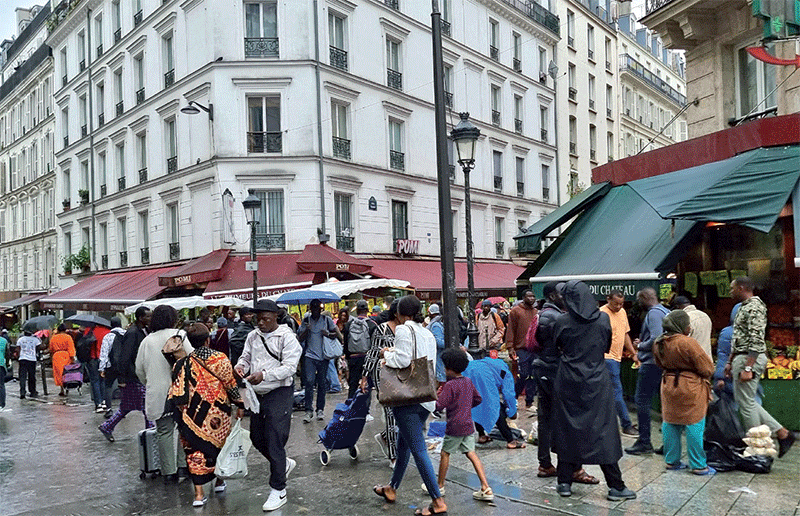
Boxing, fencing, soccer, track and field... While awaiting the first medals for Moroccan athletes, the competitions continue with palpable intensity and passion. The arenas vibrate to the cheers of spectators from all over the world, proudly displaying the colors of their respective nations. But beyond the sports arenas, another, more discreet and often forgotten Paris continues to live and breathe: the Barbès district. Located in the 18th district, Barbès is both a vibrant and complex neighborhood, where an abundance of cultural diversity coexists with difficult socio-economic realities. As soon as one steps out of the Barbès-Rochechouart subway station, the contrast with the Olympic festivities is striking. What immediately catches the eye are the young people, often in small groups, some of whom are trying to sell cigarettes on the sly, illustrating the daily struggle for economic survival.
The risk of being robbed is very real and omnipresent, requiring constant vigilance. This reality is not specific to the Barbès district; it extends to all the world’s major cities, affecting residential areas, shopping centers, tourist sites, and public transport. In some of the district’s stores, merchants are warning customers to store their cell phones carefully. This climate of insecurity is a sad urban reality that transcends borders and continents. Commercial activities are concentrated in the streets near the subway station, generating intense attendance. Merchants, mostly of North African or African origin, enliven the scene energetically. Fruit and vegetable stalls immediately attract attention with their red apples, juicy oranges and varied vegetables, creating a visual patchwork of fresh produce.
In butcher’s shops, stalls are filled with neatly arranged pieces of meat, with clearly visible price tags. Stacked red crates, overflowing with cuts of meat, mainly calves’ or cows’ feet, show the diversity of products on offer, catering to the needs of a loyal clientele. While Paris shines under the limelight of the Olympic Games, the Barbès district continues to bear witness to another reality of the capital, where cultural diversity and socio-economic challenges rub shoulders on a daily basis.
Zola, Gabin, Debbouze, and other stars …
Known for its vibrant atmosphere and its popular markets, the Barbès district has welcomed populations of immigrant origin, particularly from North Africa, since the 1950s. This immigration has deeply marked the identity of the district, making Barbès a crossroads of intertwining cultures. The majority of customers and passers-by, like the employees, are immigrants, often with modest incomes. This socio-economic reality shapes the daily life of the neighborhood. Since the 19th century, the Barbès district has been frequented by many writers and artists, and has inspired various performances, such as “L’Assommoir” by Emile Zola. It is also the birthplace of the late actor Jean Gabin, and of comedian Jamal Debbouze who took part in the Parisian relay of the Olympic flame which Jamal picked up in the streets of Barbès.
Khadija Masmoudi


























